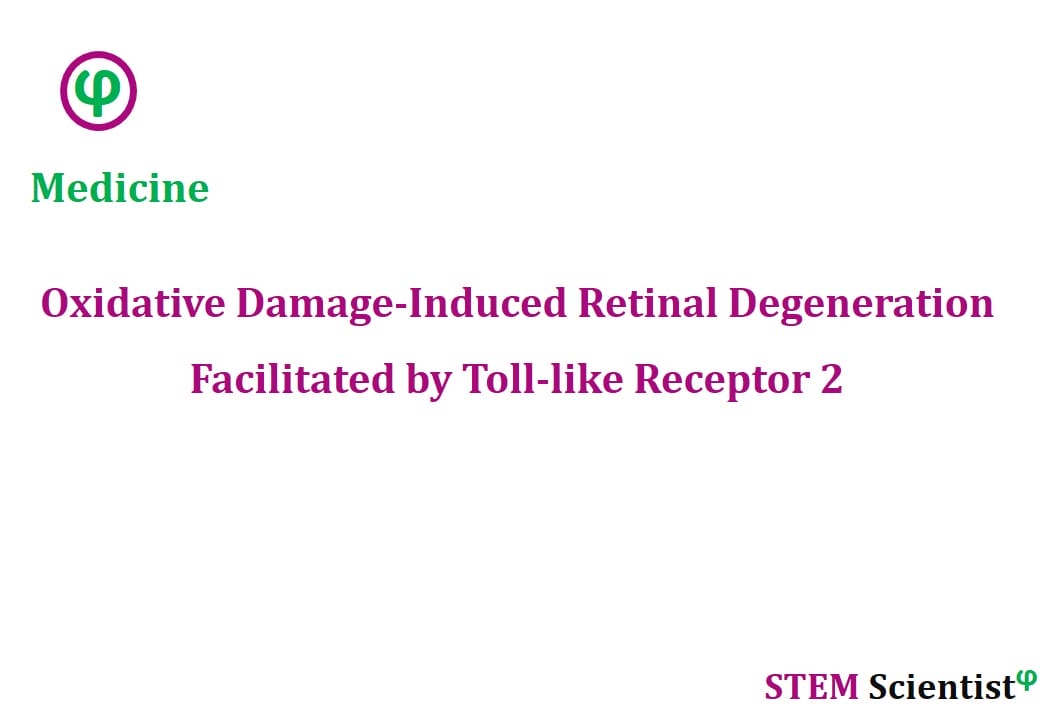
The following study was conducted by Scientists from Department Clinical Medicine, School of Medicine, Trinity College Dublin, Dublin, Ireland; The John Curtin School of Medical Research, The Australian National University, Canberra, ACT, Australia; Institute for Vision Research, University of Iowa, Iowa City, USA; Smurfit Institute of Genetics, Trinity College Dublin, Dublin, Ireland; National Eye Institute, National Institutes of Health, Bethesda, MD, USA; Department of Chemistry, Case Western Reserve University, Cleveland, OH, USA; The ANU Medical School, The Australian National University, Canberra, ACT, Australia; Trinity College Institute of Neuroscience (TCIN), TCD, Dublin, Ireland; The National Children’s Research Centre, Our Lady’s Hospital Crumlin, Dublin, Ireland; Study is published in Cell Reports Journal as detailed below.
Cell Reports; 30(7): 2209-2224.e2205; (2020)
Toll-like Receptor 2 Facilitates Oxidative Damage-Induced Retinal Degeneration
Highlights
- TLR2 activates the alternative complement pathway
- TLR2 signaling triggers sub-lytic MAC formation on retinal pigment epithelial cells
- TLR2 deficiency reduces oxidative stress-induced C3 and MAC in the outer retina
- TLR2 blockade protects photoreceptors and RPE from oxidative stress-induced cell death
Summary
Retinal degeneration is a form of neurodegenerative disease and is the leading cause of vision loss globally. The Toll-like receptors (TLRs) are primary components of the innate immune system involved in signal transduction. Here we show that TLR2 induces complement factors C3 and CFB, the common and rate-limiting factors of the alternative pathway in both retinal pigment epithelial (RPE) cells and mononuclear phagocytes. Neutralization of TLR2 reduces opsonizing fragments of C3 in the outer retina and protects photoreceptor neurons from oxidative stress-induced degeneration. TLR2 deficiency also preserves tight junction expression and promotes RPE resistance to fragmentation. Finally, oxidative stress-induced formation of the terminal complement membrane attack complex and Iba1+ cell infiltration are strikingly inhibited in the TLR2-deficient retina. Our data directly implicate TLR2 as a mediator of retinal degeneration in response to oxidative stress and present TLR2 as a bridge between oxidative damage and complement-mediated retinal pathology.
Source:
Cell Reports
URL: https://www.cell.com/cell-reports/fulltext/S2211-1247(20)30089-9
Citation:
Mulfaul, K., E. Ozaki, et al. (2020). “Toll-like Receptor 2 Facilitates Oxidative Damage-Induced Retinal Degeneration.” Cell Reports 30(7): 2209-2224.e2205.


